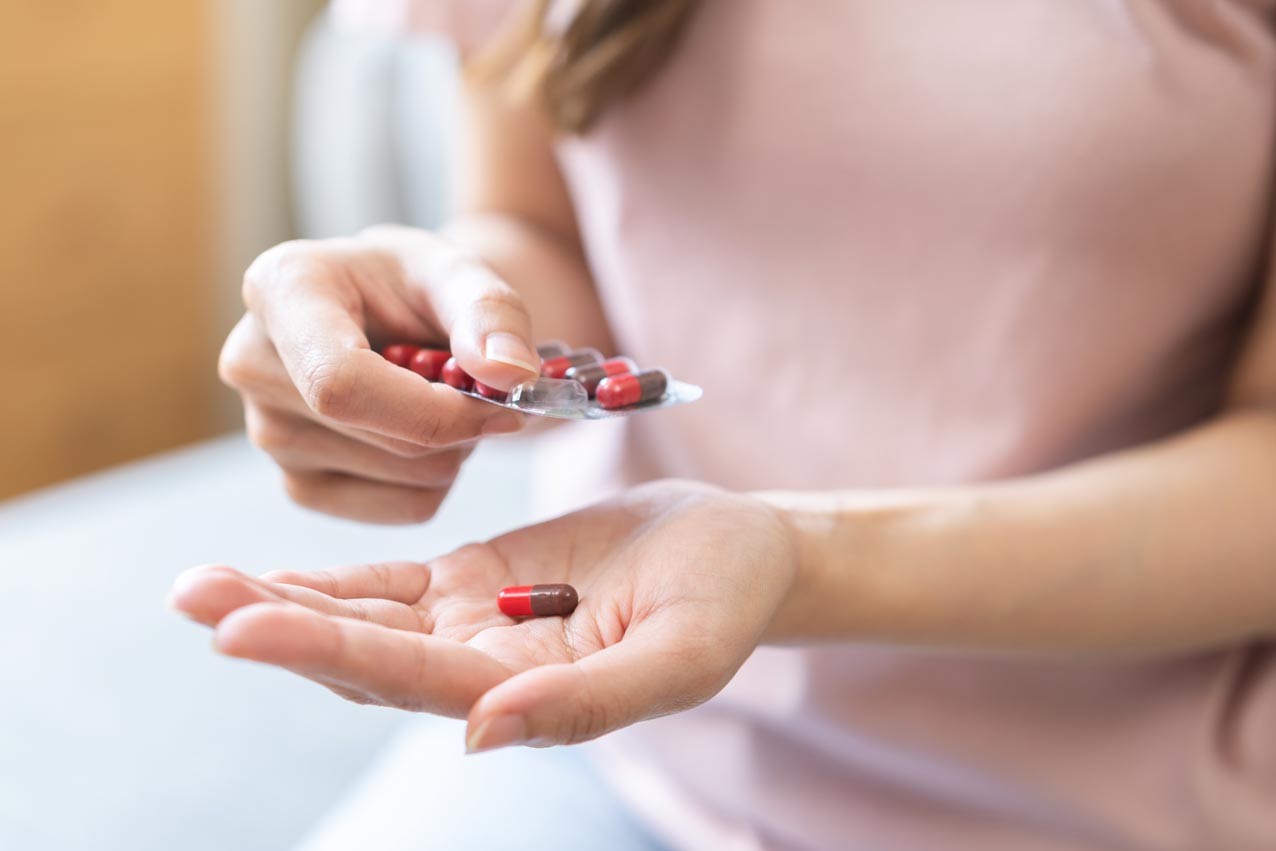Antidepressant Prescriptions Surge Post-COVID Among Adolescents And Young Adults
Antidepressant prescriptions surge post-COVID among adolescents and young adults, largely influenced by females. This supports the assertion that the mental health of adolescents and young adults deteriorated during this period.
Author:Daniel JamesReviewer:Anderson PattersonFeb 29, 202419.8K Shares683.7K Views

Antidepressant prescriptions surge post-COVID among adolescents and young adults, largely influenced by females. A study published in Pediatricsrevealed that while there was already a gradual increase in antidepressant dispensing before the outbreak in March 2020, it spiked by 63.5% afterward. This supports the assertion that the mental health of adolescents and young adults deteriorated during this period.
Although there have been numerous studies examining changes in antidepressant dispensing post-March 2020, none specifically focused on adolescents and young adults, nor did they extend beyond 2020. To fill this gap, researchers analyzed data from 2016 to 2022 to pinpoint the impact of the COVID-19 outbreak on antidepressant dispensing trends among individuals aged 12 to 25.
The study encompassed 18,395,915 individuals, with 221,268,402 antidepressant prescriptions dispensed. Adolescents, defined as those aged 12 to 17 years, and young adults, aged 18 to 25 years, were the two primary age categories.
Females made up the majority of participants (64.4%), with most residing in the South (38.6%). The mean age was 19.2 years, with a standard deviation of 3.9.
Selective serotonin reuptake inhibitors (SSRIs) were the most commonly evaluated group of medications, with sertraline (24.1%), fluoxetine (18.5%), and escitalopram (16.3%) being the most prevalent. Data were collected from the IQVIA Longitudinal Prescription Database, which covers dispensing from various types of pharmacies across the United States.
From January 2016 to December 2022, the monthly rate of antidepressant dispensing rose sharply by 66.3%, from 2575.9 to 4284.8 individuals per 100,000. Before March 2020, this rate increased by an average of 17 individuals per month (95% CI: 15.2 to 18.8). After March 2020, the rate increased by an average of 27.8 individuals per month (95% CI: 22.1 to 33.4). This change represented a 63.5% increase for the overall cohort.
The most notable surge in month-over-month antidepressant dispensing was noted among female adolescents. Before March 2020, the monthly dispensing rate for this group increased by 17.9 individuals per month (95% CI: 13.7 to 22.2). However, after March 2020, the rate escalated to 41.1 individuals per month (95% CI: 32.9 to 49.2), marking a staggering 129.6% increase.
While both female adolescents and young adults experienced increases in monthly antidepressant dispensing, a decrease was observed among male adolescents, with minimal changes among male young adults. This gender-based disparity led investigators to conclude that the overall rise in antidepressant dispensing was predominantly driven by females.
“„Multiple studies suggest that rates of anxiety and depression among female adolescents increased during the pandemic. These studies, coupled with our findings, suggest the pandemic exacerbated a pre-existing mental health crisis in this group.- Kao Ping Chua, MD, PhD, lead study author
Although the decrease in antidepressant dispensing among male adolescents might seem indicative of improved mental health, investigators observed an inconsistent trend. Concurrently, there was a rise in emergency room visits due to suicide attempts and reports of sadness and hopelessness among this demographic. Investigators suggested that the decline could be attributed to males seeking healthcare less frequently during the COVID-19 pandemic.
Several additional factors, including lengthy waitlists for psychotherapy post-March 2020, likely played a role in the observed increase in antidepressant dispensing, particularly among females. Moving forward, research should examine how factors such as access to mental health care and shifts in treatment approaches further influenced this uptick.
“„In my primary care clinic, I often heard from patients and families that they were facing 6-9 month wait lists for therapy during the pandemic. In those situations, it didn't make sense to withhold antidepressants and recommend a therapy-only approach.- Kao Ping Chua
The growing utilization of antidepressants, evident both before and notably after the onset of the COVID-19 pandemic, points to a troubling mental health trend among adolescents and young adults. It is crucial for future research to prioritize the discovery of effective interventions that can enhance both short and long-term mental health outcomes for these demographics.

Daniel James
Author
Daniel James is a distinguished gerontologist, author, and professional coach known for his expertise in health and aging.
With degrees from Georgia Tech and UCLA, including a diploma in gerontology from the University of Boston, Daniel brings over 15 years of experience to his work.
His credentials also include a Professional Coaching Certification, enhancing his credibility in personal development and well-being.
In his free time, Daniel is an avid runner and tennis player, passionate about fitness, wellness, and staying active.
His commitment to improving lives through health education and coaching reflects his passion and dedication in both professional and personal endeavors.

Anderson Patterson
Reviewer
Anderson Patterson, a tech enthusiast with a degree in Computer Science from Stanford University, has over 5 years of experience in this industry.
Anderson's articles are known for their informative style, providing insights into the latest tech trends, scientific discoveries, and entertainment news.
Anderson Patterson's hobbies include exploring Crypto, photography, hiking, and reading.
Anderson Patterson's hobbies include exploring Crypto, photography, hiking, and reading.
In the Crypto niche, Anderson actively researches and analyzes cryptocurrency trends, writes informative articles about blockchain technology, and engages with different communities to stay updated on the latest developments and opportunities.
Latest Articles
Popular Articles
